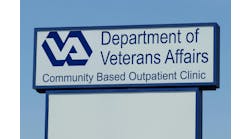By definition, a learning health system creates a virtuous cycle where data collected in routine care is studied for variations and best practices and that knowledge feeds changes to the system to create better performance. In a Feb. 14 talk, David Atkins, M.D., M.P.H., director of Health Services Research and Development at the Department of Veterans Affairs, described steps the VA is taking to move in that direction.
As director of VA’s Health Services Research and Development Service, Atkins oversees a $94 million intramural health services research program, comprised of approximately 1,000 funded investigators and more than 300 ongoing research projects aimed at improving the health of and care for our nation’s veterans. The VA’s Quality Enhancement Research Initiative (QUERI) focuses on implementation of evidence-based innovations to improve healthcare for veterans.
Speaking during an NIH Collaboratory Grand Rounds meeting, Atkins first noted some impediments keeping the VA (and others) from realizing the vision of a learning health system. He said that like other health systems, the VA’s research effort requires some structural changes. The VA does have some unique strengths when it comes to research. “We have 20 years of national electronic health record data in a data warehouse, so we have larger and longer longitudinal data than most health systems,” he said. And although the VA has had some highly publicized difficulties, particularly around timely access to care, people recognize it has strengths in integrated primary and mental health care and is a leader in telehealth.
Congress authorizes funding for VA research, but one challenge its research effort faces is timelines. “Our research takes too long,” Atkins said frankly. One study looked at the average length of research projects and found it took more than six years from grant submission to when a paper is published. Clinicians tend to make decisions with imperfect information rather than wait that long. “Clinical program leaders care about research, but they have trouble looking out more than three months,” he said. They want results specific to their situation and they want fast information that is “good enough” rather than data that is publishable in JAMA.
“For those doing pragmatic trials, by the time the results are available, the clinical context has changed and it may no longer be applicable,” he said. Another problem the VA faces is that over that six years, the VA may have four secretaries. If researchers are doing things because they think it is a high priority for one secretary, the priorities of later secretaries may be different.
Indeed, too little research achieves lift-off, he noted. Work done in clinical trials looked so unrepresentative of patient populations, it can be hard for clinical leaders to apply the findings to their practice. The idea behind pragmatic trials was to produce interventions more easily translated to care, he added, yet many studies do not even get sustained at their original site, much less scale up to others.
Possible Solutions
Atkins then described some solutions the VA is working on. Several years ago, they funded an effort called CREATE (Collaborative Research for Evidence to Advance Treatment Effectiveness). It grouped three to five projects around a particular clinical problem. These are high-risk, high-reward pilots. For instance, one of these collaboratives is built around women’s health. “The projects address a range of questions, but they all came directly from deep engagement with clinical partners,” he said.
The VA also sought to build program evaluation into the rollout of new projects. It has six randomized program evaluations under way, including one on interventions with veterans who are at high risk of suicide and another to create a screen for interpersonal violence.
“As nice as it is theoretically, getting them to assign roll-out randomly is challenging,” Atkins admitted. In the field, the reality is there are people who have helped shape a program and are raring to go. Advocates started it and convinced leadership to roll it out. Telling them that they may be randomized into it tomorrow or two years from now is a real challenge.”
Also, a program office may be invested in a change and less interested in whether an intervention works; they are more interested in where is it working best so they can improve how it works where it is not working as well.
Atkins also stressed the need for new models for partnerships. He cited as an example the Women’s Health Research Consortium. Working with stakeholders, including hospital decision makers and front-line providers, they created a practice-based research network with the goal of making the engagement deeper.
“Where they have worked the best, we have had sustained bidirectional engagement with partners,” he said. “You have to think about where there is mutual benefit. We have learned this the hard way. Making it clear we want to help them increases the chances that results will be acted upon.”


